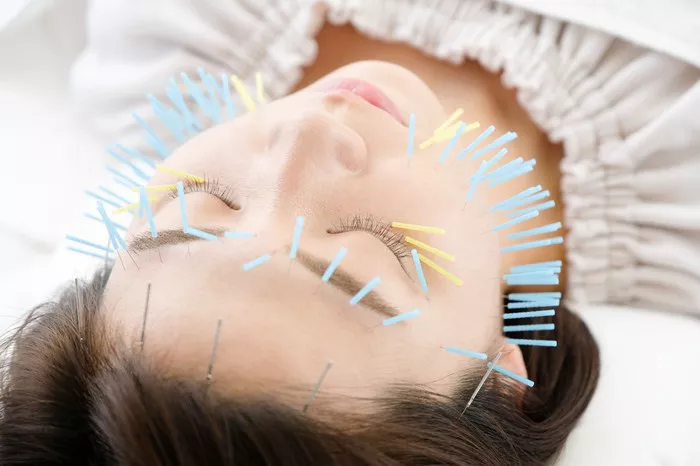Embarking on a journey to understand the intricacies of scar removal requires a nuanced exploration of various treatments and interventions. Scars, often seen as lasting reminders of past injuries or surgeries, prompt a common question: Can permanent scars truly be removed? In this comprehensive guide, we unravel the complexities surrounding scar removal, delving into the array of treatments available, from conventional options to cutting-edge technologies, and exploring the factors that influence the outcomes of these interventions.
1. Understanding Scars
Before delving into the prospects of scar removal, it’s imperative to comprehend the nature of scars and the body’s intricate healing mechanisms. Scars are the result of the skin’s response to injuries, surgeries, or other trauma. The body initiates a reparative process, leading to the formation of scar tissue. This tissue differs in texture and appearance from the surrounding skin, often prompting individuals to seek ways to minimize or eliminate its visibility.
2. Types of Scars
Scars manifest in various forms, each presenting unique challenges for removal. Common types include hypertrophic scars, keloids, atrophic scars, and contracture scars. Hypertrophic and keloid scars involve excess collagen production, leading to raised and sometimes overgrown scar tissue. Atrophic scars, on the other hand, result from tissue loss, creating depressions in the skin. Contracture scars, often associated with burns, cause skin tightening and may impact mobility.
3. Topical Treatments
Topical treatments represent a common starting point for individuals seeking scar removal. An array of over-the-counter creams and gels claim to reduce the appearance of scars. Ingredients like silicone, onion extract, and vitamin E are frequently touted for their potential benefits. While these treatments may provide some improvement, their effectiveness varies, and outcomes depend on factors such as scar type and individual skin response.
4. Laser Therapy
Laser therapy has emerged as a sophisticated and precise method for scar modification. Different types of lasers, including ablative and non-ablative options, target specific aspects of scar tissue. Ablative lasers remove outer layers of skin, stimulating collagen production and promoting smoother skin. Non-ablative lasers penetrate the skin without removing layers, focusing on collagen remodeling. Laser therapy is particularly effective for hypertrophic and keloid scars.
5. Microneedling
Microneedling, or collagen induction therapy, involves using fine needles to create micro-injuries in the skin. This process stimulates the body’s natural collagen production, aiding in the remodeling of scar tissue. Microneedling is versatile and can be effective for various types of scars, improving texture and reducing their prominence. Multiple sessions may be required for optimal results.
6. Cryotherapy
Cryotherapy, or freezing, is a technique that involves applying extreme cold to the scar tissue. This procedure aims to reduce scar prominence and improve texture. While cryotherapy is commonly used for keloid and hypertrophic scars, its effectiveness can vary. Multiple sessions may be needed, and caution is advised to prevent potential side effects.
7. Surgical Options
For certain types of scars, especially larger or more complex ones, surgical interventions may be considered. Scar excision involves removing the scar tissue and closing the wound with meticulous care to minimize scarring. Scar revision aims to improve the appearance of an existing scar, often combining excision with other techniques. Surgical options are tailored to the specific characteristics of each scar.
8. Dermal Fillers
Dermal fillers, commonly used for cosmetic purposes, can also play a role in scar removal. Injecting fillers into atrophic scars helps restore volume and smooth out depressions. While this provides temporary improvement, repeated treatments may be necessary for sustained results. Dermal fillers are particularly beneficial for scars with sunken or indented areas.
9. Platelet-Rich Plasma (PRP)
Platelet-rich plasma (PRP) therapy involves using the patient’s own blood components to stimulate healing and tissue regeneration. When applied to scars, PRP can enhance collagen production and improve skin texture. While research on its efficacy is ongoing, PRP shows promise as a natural and minimally invasive approach to scar improvement.
10. Factors Influencing Scar Removal
The effectiveness of scar removal treatments is influenced by a myriad of factors. These include the type and age of the scar, individual skin characteristics, and the chosen treatment modality. Patience is paramount, as scar improvement often occurs gradually over multiple sessions or months.
11. Prevention and Early Intervention
While scar removal is a viable option, prevention and early intervention are key components of scar management. Proper wound care, avoiding unnecessary tension on healing skin, and protecting scars from sun exposure can all contribute to minimizing scar formation. Addressing emerging scars promptly increases the likelihood of successful intervention.
12. Consultation with Professionals
Navigating the landscape of scar removal necessitates professional guidance. Dermatologists, plastic surgeons, and skincare specialists can assess individual cases, recommend suitable interventions, and tailor treatment plans to specific needs. A thorough consultation is essential for understanding the available options and setting realistic expectations.
In conclusion, the prospect of removing permanent scars is a nuanced journey that involves a spectrum of treatments and considerations. While complete removal may not always be achievable, significant improvements in scar appearance are often possible. The key lies in adopting a personalized approach, considering the diverse nature of scars and leveraging a combination of treatments for optimal results. Whether through advanced technologies, surgical precision, or natural therapies, individuals can embark on a path towards scar improvement, embracing the possibilities that modern dermatology and skincare offer.
[inline_related_posts title=”You Might Be Interested In” title_align=”left” style=”list” number=”6″ align=”none” ids=”3544,3542,3540″ by=”categories” orderby=”rand” order=”DESC” hide_thumb=”no” thumb_right=”no” views=”no” date=”yes” grid_columns=”2″ post_type=”” tax=””]































